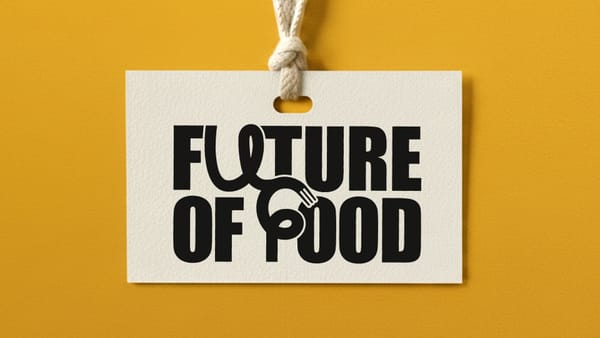UNSTUCK 015: Putting Sustainable Food To The Taste Test
Why we need to get serious about taste to become part of food culture

You’ve quite possibly seen the Great Taste logo on food or drink brands as you’ve walked around your local supermarket, especially if it’s a fancy one. Each year thousands of independent food and drink brands put themselves to a blind taste test with a panel of over 500 experts – including chefs, retail buyers, food writers and category specialists – in the hopes of earning the sticker.
This year, 13,672 entries were received from more than 3,500 companies across 115 countries. Among them, 3,938 were awarded 1 star; 1,386 received 2 stars and 266 were granted the highest, 3-star status.
How many of those coveted 3-stars went to products classified as vegan? One. Congratulations THIS! Isn’t Lamb Kebabs (THIS! also has 2 1-star products and 3 2-star products).
But the sustainable foods industry needs to be working much harder to be part of food culture, and trusted accreditation schemes such as the Great Taste awards are a good place to start.
Taste superiority (not parity) is king
Every category has a key (what we call in the marketing world) driver – the most important factor to consumers when they are buying a category. In the airline world it’s service. In winter jackets it’s warmth. In food it’s taste.
Unfortunately this is something a lot of sustainable brands either failed to appreciate in their excitement over saving animals/the cleverness of their technology, potentially forgot in their rush to get to market, or quite possibly underestimated the quality impact that can occur in going from kitchen samples to factory production. Or all of the above.
The dominant industry mantra of “taste, price, convenience” whilst thankfully includes taste, is one focused on parity, not superiority. The Great Taste judges are not tucking into a craft beer (to draw an example from another category) and opinionating on whether it tastes the same as Heineken. They are considering whether it is best-in-class for the beer culture and consumer trends they represent.
A shortcut for foodies and buyers
What is available for us to buy as packaged food is greatly influenced by food culture. We’ve written before about how ready-to-eat sushi came to be available on supermarket shelves. Culture develops from influencers and awards serve as a proven way for those brands getting it right to be deemed worthy (and are a lot cheaper than paying a celebrity and more reliable than hoping your idea might just go viral).
For nearly a hundred years, the Michelin Guide has trained foodies to understand and respect a simple 1-,2- or 3-star rating when they choose restaurants. You don’t have to go through five dimensional assessments of ingredient quality and flavor harmony across repeat visits. The inspectors do it for you and you look at the rating.
Awards like Great Taste bring the same mental shortcut to the retail environment. According to their data for the UK, over half of adults are familiar with the logo and of those 80% said it would make them consider a product, 74% agreed it was a sign of quality and 56% said it would persuade them to buy. If you multiply out the math it suggests that almost one in three UK shoppers would be persuaded to buy a product because it has a Great Taste award.
Crucially, it’s not just consumers that use these mental shortcuts. Retail buyers, who are always on the lookout for their next star suppliers, do as well. “Awards are a great way for a retail business to easily identify good quality products” says Adrian Boswell, a senior food buyer for Selfridges Food Halls. Having the assurance that experienced palates have given a product the thumbs up gives buyers the confidence to stock it.
Time to accept the challenge
To raise the taste profile of sustainable foods, we need more brands entering awards like these. It’s not enough to aim for taste parity, we have to aim for extraordinary, getting valuable feedback from judges when we don’t hit the mark and proudly wearing the stars when we do.
The only reason not to do it is if you don’t think your product tastes good enough. In which case, quite frankly, you don’t have a product at all.






